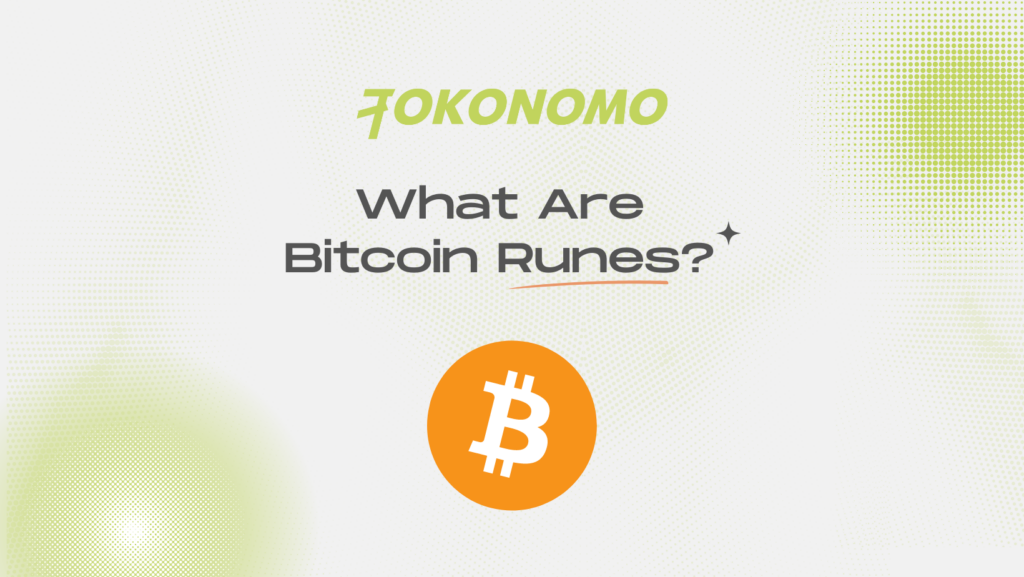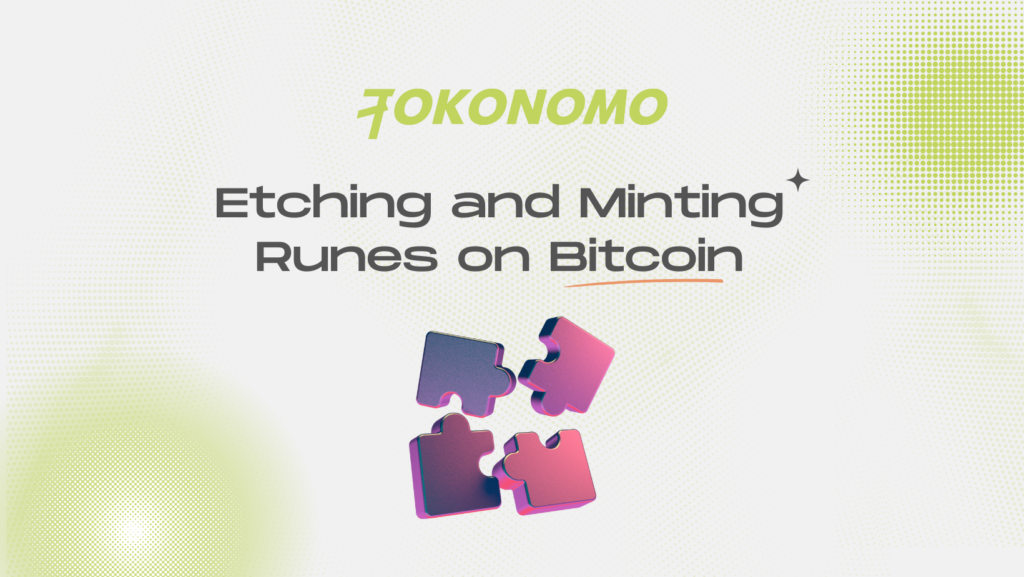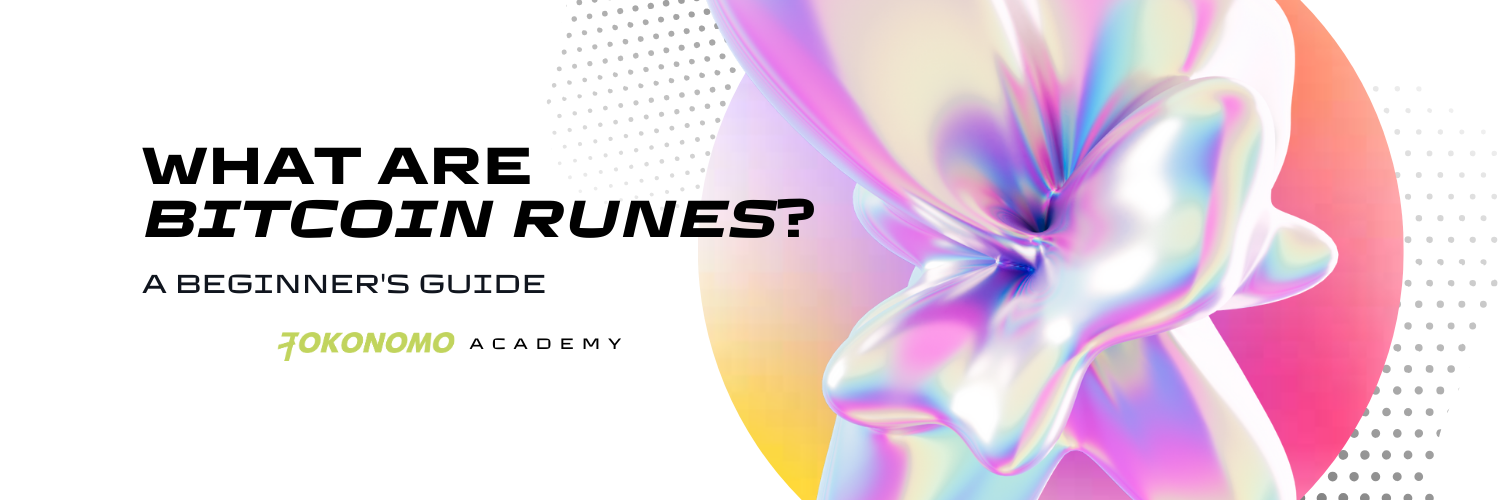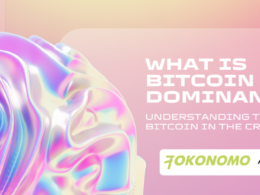Throughout the years, the Bitcoin ecosystem has grown significantly, now encompassing both fungible tokens and non-fungible tokens (NFTs) within its network. In this article, we will delve into the Bitcoin Runes protocol, examining how it operates, highlighting the key differences from BRC-20 tokens, and discussing its potential benefits.
What Are Bitcoin Runes?
Bitcoin Runes is an innovative protocol that facilitates the creation of fungible tokens directly on the Bitcoin blockchain. Unlike BRC-20 and SRC-20 tokens, which also operate on the Bitcoin blockchain, Runes do not depend on the Ordinals protocol. Instead, they are designed to be simpler and more efficient. This is achieved by utilizing well-established Bitcoin blockchain models, specifically the UTXO (Unspent Transaction Output) model and the OP_RETURN opcode.


How Do Bitcoin Runes Work?
The Bitcoin Runes protocol operates through two fundamental mechanisms of the Bitcoin blockchain: Bitcoin’s UTXO (Unspent Transaction Output) transaction model and the OP_RETURN opcode.
In the UTXO transaction model, every transaction generates outputs that are treated as distinct units of digital currency. To initiate a new transaction, these outputs are used as inputs. The UTXO model enables the tracking of each unit of cryptocurrency with precision. Within the context of Bitcoin Runes, each UTXO can hold varying amounts or types of Runes, thereby streamlining the management of tokens and ensuring efficient tracking.
The OP_RETURN opcode permits users to attach additional information to Bitcoin transactions. This opcode allows for the inclusion of up to 80 bytes of extra data in a transaction that cannot be spent. Bitcoin Runes specifically utilize the OP_RETURN opcode to store token-related data, such as the token’s name, ID, symbol, commands for specific actions, and other critical information. This data is encapsulated in what is known as the Runestone, which is embedded within the OP_RETURN opcode of a Bitcoin transaction.
Etching and Minting Runes on Bitcoin
The procedure of crafting a new Rune is known as etching. Etching requires specifying several crucial details, including the Rune’s name, symbol, ID, supply amount, divisibility, and other essential parameters. All of this information is meticulously recorded in the OP_RETURN output of a blockchain transaction. During the etching process, creators are also presented with the option to include a “premine,” which permits them to allocate a certain portion of the Rune to themselves before it is made available to the public.


After a Rune has been etched, it can be minted through either open or closed mints. Open minting allows anyone to generate new Runes following the initial etching by creating mint transactions. Conversely, closed mints restrict the minting of new tokens to only when specific predetermined conditions are met, such as a particular time period, beyond which the minting process is concluded.
Bitcoin Runes vs. BRC-20
Operation Model
Bitcoin Runes function according to the Unspent Transaction Output (UTXO) model inherent to Bitcoin. On the other hand, BRC-20 tokens are built upon the Bitcoin Ordinals protocol, a framework that involves attaching data directly to individual satoshis (sats).
Transfer of Tokens
Bitcoin Runes implement a transfer mechanism wherein transactions generate a fresh set of UTXOs derived from the information housed within the OP_RETURN field of a Bitcoin transaction. Conversely, BRC-20 token transfers necessitate the generation of novel inscriptions for every transaction occurrence.
Minting of Tokens
Runes have the capability to be minted through either open or closed minting procedures, offering developers the option for premining. Conversely, BRC-20 minting is exclusively confined to the open minting procedure, thereby restricting the flexibility in the initial distribution of tokens.
Management
The Bitcoin Runes protocol seamlessly integrates with the Bitcoin Lightning network, extending its support to lightning clients and SPV (Simplified Payment Verification) wallets. In contrast, BRC-20 tokens necessitate wallets that are compatible with the Ordinals protocol for their functionality.
Advantages of Bitcoin Runes
Effectiveness
Bitcoin Runes offer a highly efficient approach to managing tokens within the Bitcoin network by leveraging the OP_RETURN model. This strategy effectively mitigates the risk of generating unspendable UTXOs, thus preventing network congestion. Unlike BRC-20 inscriptions, which may consume up to 4MB of data, the OP_RETURN code utilizes a mere 80 bytes. This significant difference in data utilization serves to alleviate the burden on the Bitcoin network, thereby bolstering its operational efficiency and minimizing congestion-related concerns.
Ease
In comparison to other options available, Bitcoin Runes facilitate a notably simpler process for generating and overseeing multiple fungible tokens directly on the blockchain. This is accomplished without relying on external data or generating native tokens, thereby circumventing the proliferation of unnecessary “junk” UTXOs. This methodology streamlines token administration and broadens its accessibility to a broader audience of users.
Capability to Broaden the User Base
Previously, both Ordinals and BRC-20 protocols played a significant role in enabling the development of fungible meme coins, thereby drawing a larger user base to the Bitcoin network. With the emergence of Bitcoin Runes in April 2024, there has been a surge of interest within cryptocurrency communities and meme coin aficionados, both preceding and following its debut. Although the protocol’s activity witnessed a decline post-launch, it introduces a fresh utility for Bitcoin, potentially appealing to a broader audience in the days ahead.
Conclusion
Bitcoin Runes, a pioneering protocol, facilitates the seamless generation of fungible tokens within the Bitcoin blockchain ecosystem. Leveraging the UTXO model alongside the OP_RETURN opcode, it enhances the network’s efficacy in token management. With its innovative approach, Runes stands poised to broaden Bitcoin’s user base and streamline token creation procedures.











